Actively Controlling the Topological Transition of Dispersion Based on Electrically Controllable Metamaterials
Abstract
:Featured Application
Abstract
1. Introduction
2. Actively Tunable Topological Transition in Graphene/Dielectric Multilayers
3. Experimental Demonstration of the Actively Tunable Topological Transition Based on TLs
4. Conclusions
Acknowledgments
Author Contributions
Conflicts of Interest
Appendix A. Simulation Method about the Details of the COMSOL Simulation
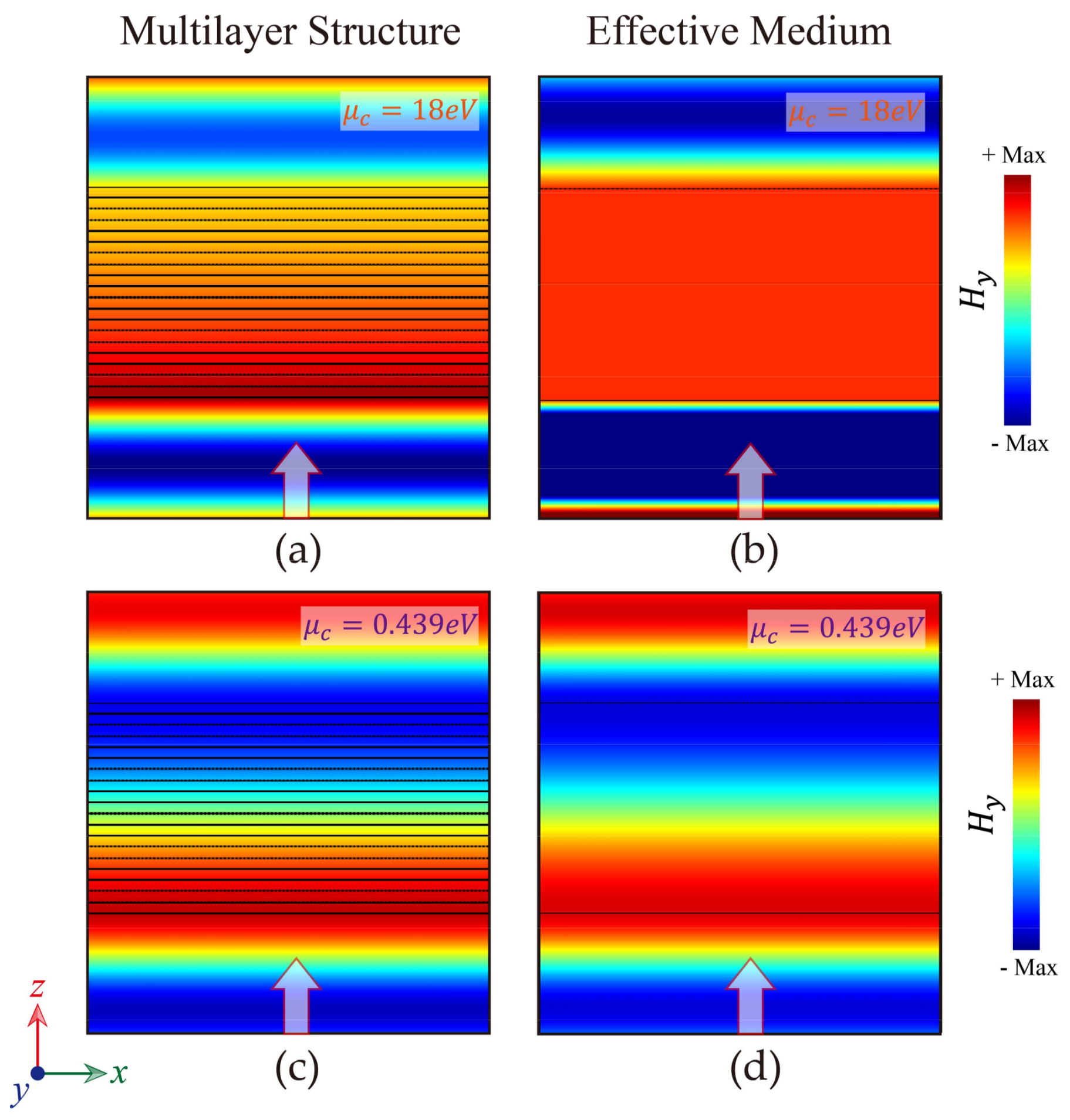
Appendix B. Details of the Experimental Methods
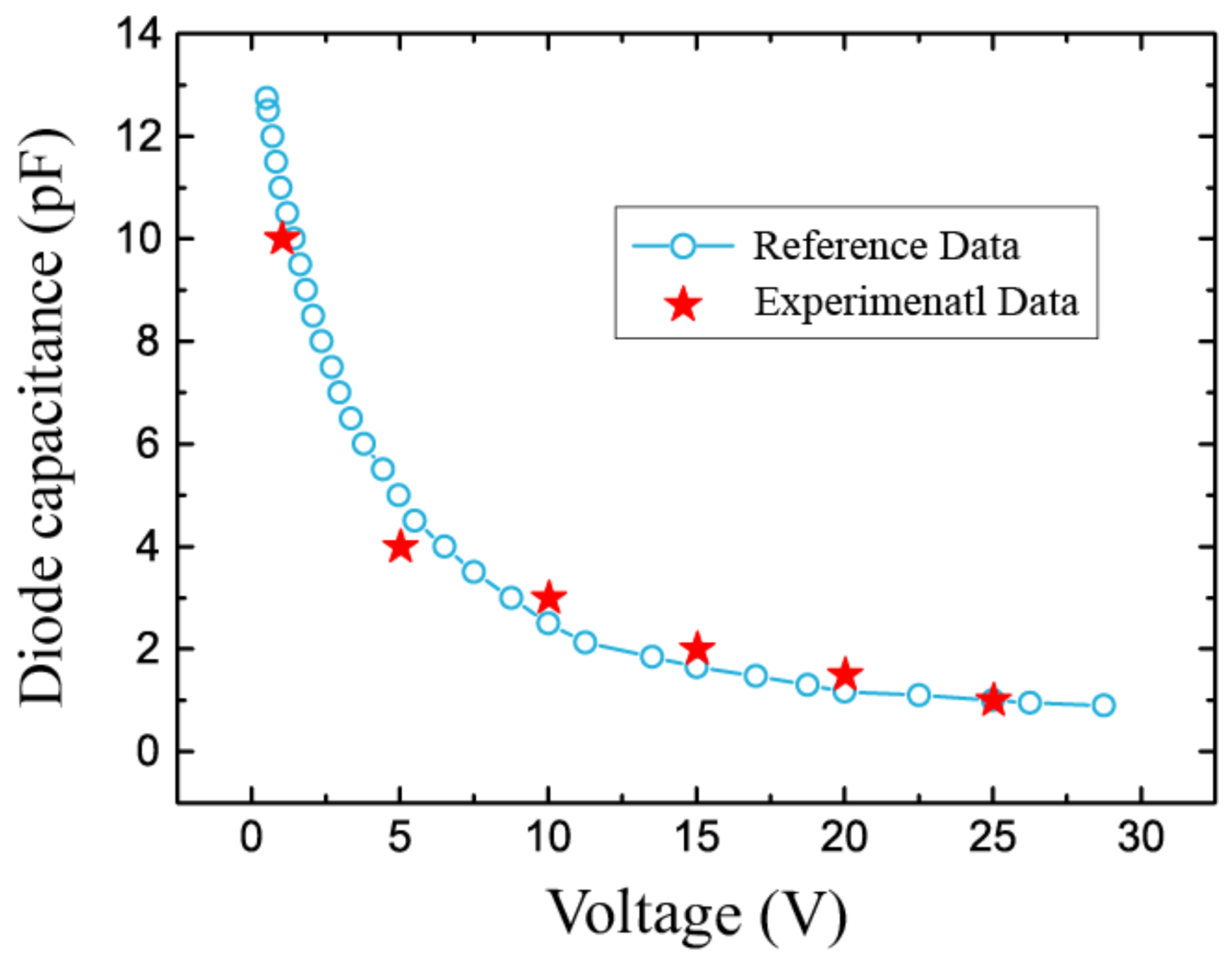
References
- Krishnamoorthy, H.N.; Jacob, Z.; Narimanov, E.; Kretzschmar, I.; Menon, V.M. Topological transitions in metamaterials. Science 2012, 336, 205–209. [Google Scholar] [CrossRef] [PubMed]
- Kruk, S.S.; Wong, Z.J.; Pshenay-Severin, E.; O’Brien, K.; Neshev, D.N.; Kivshar, Y.S.; Zhang, X. Magnetic hyperbolic optical metamaterials. Nat. Commun. 2016, 7, 11329. [Google Scholar] [CrossRef] [PubMed]
- Schulz, K.M.; Vu, H.; Schwaiger, S.; Rottler, A.; Korm, T.; Sonnenberg, D.; Kipp, T.; Mendach, S. Controlling the spontaneous emission rate of quantum wells in rolled-up hyperbolic metamaterials. Phys. Rev. Lett. 2016, 117, 085503. [Google Scholar] [CrossRef] [PubMed]
- Galfsky, T.; Gu, J.; Narimonov, E.E.; Menon, V.M. Photonic hypercrystals for control of light–matter interactions. Proc. Natl. Acad. Sci. USA 2017, 114, 5125–5129. [Google Scholar] [CrossRef] [PubMed]
- Fang, A.; Koschny, T.; Soukoulis, C.M. Optical anisotropic metamaterials: Negative refraction and focusing. Phys. Rev. B 2009, 90, 115155. [Google Scholar] [CrossRef]
- Naik, G.V.; Liu, J.; Kildishev, A.V.; Shalaev, V.M.; Boltasseva, A. Demonstration of Al: ZnO as a plasmonic component for near-infrared metamaterials. Proc. Natl. Acad. Sci. USA 2012, 109, 8834–8838. [Google Scholar] [CrossRef] [PubMed]
- Argyropoulos, C.; Estakhri, N.M.; Monticone, F.; Alù, A. Negative refraction, gain and nonlinear effects in hyperbolic metamaterials. Opt. Express 2013, 21, 15037–15047. [Google Scholar] [CrossRef] [PubMed]
- High, A.A.; Devlin, R.C.; Dibos, A.; Polking, M.; Wild, D.S.; Perczel, J.; de Leon, N.P.; Lukin, M.D.; Park, H. Visible-frequency hyperbolic metasurface. Nature 2015, 522, 192–196. [Google Scholar] [CrossRef] [PubMed]
- Zhang, R.Z.; Zhang, Z.M. Tunable positive and negative refraction of infrared radiation in graphene-dielectric multilayers. Appl. Phys. Lett. 2015, 107, 191112. [Google Scholar] [CrossRef]
- Jacob, Z.; Alekseyev, L.V.; Narimanov, E.E. Optical hyperlens: Far-field imaging beyond the diffraction limit. Opt. Express 2006, 14, 8247–8256. [Google Scholar] [CrossRef] [PubMed]
- Liu, Z.W.; Lee, H.; Xiong, Y.; Sun, C.; Zhang, X. Far-field optical hyperlens magnifying sub-diffraction-limited objects. Science 2007, 315, 1686. [Google Scholar] [CrossRef] [PubMed]
- Poddubny, A.; Iorsh, I.; Belov, P.; Kivshar, Y. Hyperbolic metamaterials. Nat. Photonics 2013, 7, 948–957. [Google Scholar] [CrossRef]
- Shekhar, P.; Atkinson, J.; Jacob, Z. Hyperbolic metamaterials: Fundamentals and applications. Nano Converg. 2014, 1, 14. [Google Scholar] [CrossRef] [PubMed]
- Ferrari, L.; Wu, C.H.; Lepage, D.; Zhang, X.; Liu, Z.W. Hyperbolic metamaterials and their applications. Prog. Quantum Electron. 2015, 40, 1–40. [Google Scholar] [CrossRef]
- Biehs, S.A.; Menon, V.M.; Agarwal, G.S. Long-range dipole-dipole interaction and anomalous Förster energy transfer across a hyperbolic metamaterial. Phys. Rev. B 2016, 93, 245439. [Google Scholar] [CrossRef]
- Cortes, C.L.; Jacob, Z. Super-Coulombic atom–atom interactions in hyperbolic media. Nat. Commun. 2017, 8, 14144. [Google Scholar] [CrossRef] [PubMed]
- Guo, Z.W.; Jiang, H.T.; Li, Y.H.; Chen, H.; Agarwal, G.S. Enhancement of electromagnetically induced transparency in metamaterials using long range coupling mediated by a hyperbolic material. Opt. Express 2018, 26, 627–641. [Google Scholar] [CrossRef] [PubMed]
- Segovia, P.; Marino, G.; Krasavin, A.V.; Olivier, N.; Wurtz, G.A.; Belov, P.A.; Ginzburg, P.; Zayats, A.V. Hyperbolic metamaterial antenna for second harmonic generation tomography. Opt. Express 2015, 23, 30730–30738. [Google Scholar] [CrossRef] [PubMed]
- Liu, F.; Xiao, L.; Ye, Y.; Wang, M.; Cui, K.; Feng, X.; Zhang, W.; Huang, Y. Integrated Cherenkov radiation emitter eliminating the electron velocity threshold. Nat. Photonics 2017, 11, 289–292. [Google Scholar] [CrossRef]
- Chshelokova, A.V.; Kapitanova, P.V.; Poddubny, A.N.; Filonov, D.S.; Slobozhanyuk, A.P.; Kivshar, Y.S.; Belov, P.A. Hyperbolic transmission-line metamaterials. J. Appl. Phys. 2012, 112, 073116. [Google Scholar] [CrossRef]
- Chandrasekar, R.; Wang, Z.; Meng, X.; Azzam, S.; Shalaginov, M.Y.; Kim, A.L.; Wei, A.; Kildishev, A.V.; Boltasseva, A.; Shalaev, V.M. Lasing action with gold nanorod hyperbolic metamaterials. ACS Nano 2017, 4, 674–680. [Google Scholar] [CrossRef]
- Feng, S. Loss-induced omnidirectional bending to the normal in nearzero metamaterials. Phys. Rev. Lett. 2012, 108, 193904. [Google Scholar] [CrossRef] [PubMed]
- Jiang, H.T.; Liu, W.W.; Yu, K.; Fang, K.; Sun, Y.; Li, Y.H.; Chen, H. Experimental verification of loss-induced field enhancement and collimation in anisotropic μ-near-zero metamaterials. Phys. Rev. B 2015, 91, 045302. [Google Scholar] [CrossRef]
- Yu, K.; Guo, Z.W.; Jiang, H.T.; Chen, H. Loss-induced topological transition of dispersion in metamaterials. J. Appl. Phys. 2016, 119, 203102. [Google Scholar] [CrossRef]
- Vakil, A.; Engheta, N. Transformation optics using graphene. Science 2011, 332, 1291–1294. [Google Scholar] [CrossRef] [PubMed]
- Kim, T.T.; Oh, S.S.; Kim, H.D.; Park, H.S.; Hess, O.; Min, B.; Zhang, S. Electrical access to critical coupling of circularly polarized waves in graphene chiral metamaterials. Sci. Adv. 2017, 3, e1701377. [Google Scholar] [CrossRef] [PubMed]
- Balci, O.; Kakenov, N.; Karademir, E.; Balci, S.; Cakmakyapan, S.; Polat, E.O.; Caglayan, H.; Ozbay, E.; Kocabas, C. Electrically switchable metadevices via graphene. Sci. Adv. 2018, 4, eaao1749. [Google Scholar] [CrossRef] [PubMed]
- Dunkelberger, A.D.; Ellis, C.T.; Ratchford, D.C.; Giles, A.J.; Kim, M.; Kim, C.S.; Spann, B.T.; Vurgaftman, I.; Tischler , J.G.; Long, J.P.; et al. Active tuning of surface phonon polariton resonances via carrier photoinjection. Nat. Photonics 2018, 12, 50–56. [Google Scholar] [CrossRef]
- Othman, M.A.K.; Cuclu, C.; Capolino, F. Graphene-based tunable hyperbolic metamaterials and enhanced near-field absorption. Opt. Express 2013, 21, 7614–7632. [Google Scholar] [CrossRef] [PubMed]
- Ning, R.X.; Liu, S.B.; Zhang, H.F.; Bian, B.R.; Kong, X.K. Tunable absorption in graphene-based hyperbolic metamaterials for mid-infrared range. Phys. B Condens. Matter 2015, 457, 144–148. [Google Scholar] [CrossRef]
- Iorsh, I.V.; Mukhin, I.S.; Shadrivov, I.V.; Belov, P.; Kivshar, Y.S. Hyperbolic metamaterials based on multilayer graphene structures. Phys. Rev. B 2013, 87, 075416. [Google Scholar] [CrossRef]
- Chen, P.Y.; Alu, A. Atomically thin surface cloak using graphene monolayers. ACS Nano 2011, 5, 5855–5863. [Google Scholar] [CrossRef] [PubMed]
- Naserpour, M.; Zapata-Rodríguez, C.J.; Vuković, S.M.; Pashaeiadl, H.; Belić, M.R. Tunable invisibility cloaking by using isolated graphene-coated nanowires and dimers. Sci. Rep. 2017, 7, 12186. [Google Scholar] [CrossRef] [PubMed]
- Gomez-Diaz, J.S.; Tymchenko, M.; Alù, A. Hyperbolic plasmons and topological transitions over uniaxial metasurfaces. Phys. Rev. Lett. 2015, 114, 233901. [Google Scholar] [CrossRef] [PubMed]
- Nemilentsau, A.; Low, T.; Hanson, G. Anisotropic 2D materials for tunable hyperbolic plasmonics. Phys. Rev. Lett. 2016, 116, 066804. [Google Scholar] [CrossRef] [PubMed]
- Hanson, G.W. Dyadic Green’s functions and guided surface waves for a surface conductivity model of graphene. J. Appl. Phys. 2008, 113, 064302. [Google Scholar] [CrossRef]
- Falkovsky, L.A. Optical properties of graphene. J. Phys. Conf. Ser. 2008, 129, 012004. [Google Scholar] [CrossRef]
- Agranovich, V.M.; Kravtsov, V.E. Notes on crystal optics of superlattices. Solid State Commun. 1985, 55, 85–90. [Google Scholar] [CrossRef]
- Young, A.F.; Dean, C.R.; Meric, I.; Sorgenfrei, S.; Ren, H.; Watanabe, K.; Taniguchi, T.; Hone, J.; Shepard, K.L.; Kim, P. Electronic compressibility of layer-polarized bilayer graphene. Phys. Rev. B 2012, 85, 235458. [Google Scholar] [CrossRef]
- Kapitanova, P.V.; Ginzburg, P.; Rodriguez-Fortuño, F.J.; Filonov, D.S.; Voroshilov, P.M.; Belov, P.A.; Poddubny, A.N.; Kivshar, Y.S.; Wurtz, G.A.; Zayats, A.V. Photonic spin Hall Effect in hyperbolic metamaterials for polarization-controlled routing of subwavelength modes. Nat. Commun. 2014, 5, 3226. [Google Scholar] [CrossRef] [PubMed]
- Sun, L.; Feng, S.M.; Yang, X.D. Loss enhanced transmission and collimation in anisotropic epsilon-near-zero metamaterials. Appl. Phys. Lett. 2012, 101, 241101. [Google Scholar] [CrossRef]
- Luo, J.; Liu, W.X.; Hang, Z.H.; Chen, H.Y.; Hou, B.; Lai, Y.; Chan, C.T. Arbitrary control of electromagnetic flux in inhomogeneous anisotropic media with near-zero index. Phys. Rev. Lett. 2014, 112, 073903. [Google Scholar] [CrossRef] [PubMed]
- Zhang, K.; Fu, J.H.; Xiao, L.Y.; Wu, Q.; Li, L.W. Total transmission and total reflection of electromagnetic waves by anisotropic epsilon-near-zero metamaterials embedded with dielectric defects. J. Appl. Phys. 2013, 113, 084908. [Google Scholar] [CrossRef]
- Hao, J.M.; Yan, W.; Qiu, M. Super-reflection and cloaking based on zero index metamaterial. Appl. Phys. Lett. 2010, 96, 101109. [Google Scholar] [CrossRef]
- Guo, Z.W.; Jiang, H.T.; Long, Y.; Yu, K.; Ren, J.; Xue, C.H.; Chen, H. Photonic spin Hall efect in waveguides composed of two types of single-negative metamaterials. Sci. Rep. 2017, 7, 7742. [Google Scholar] [CrossRef] [PubMed]
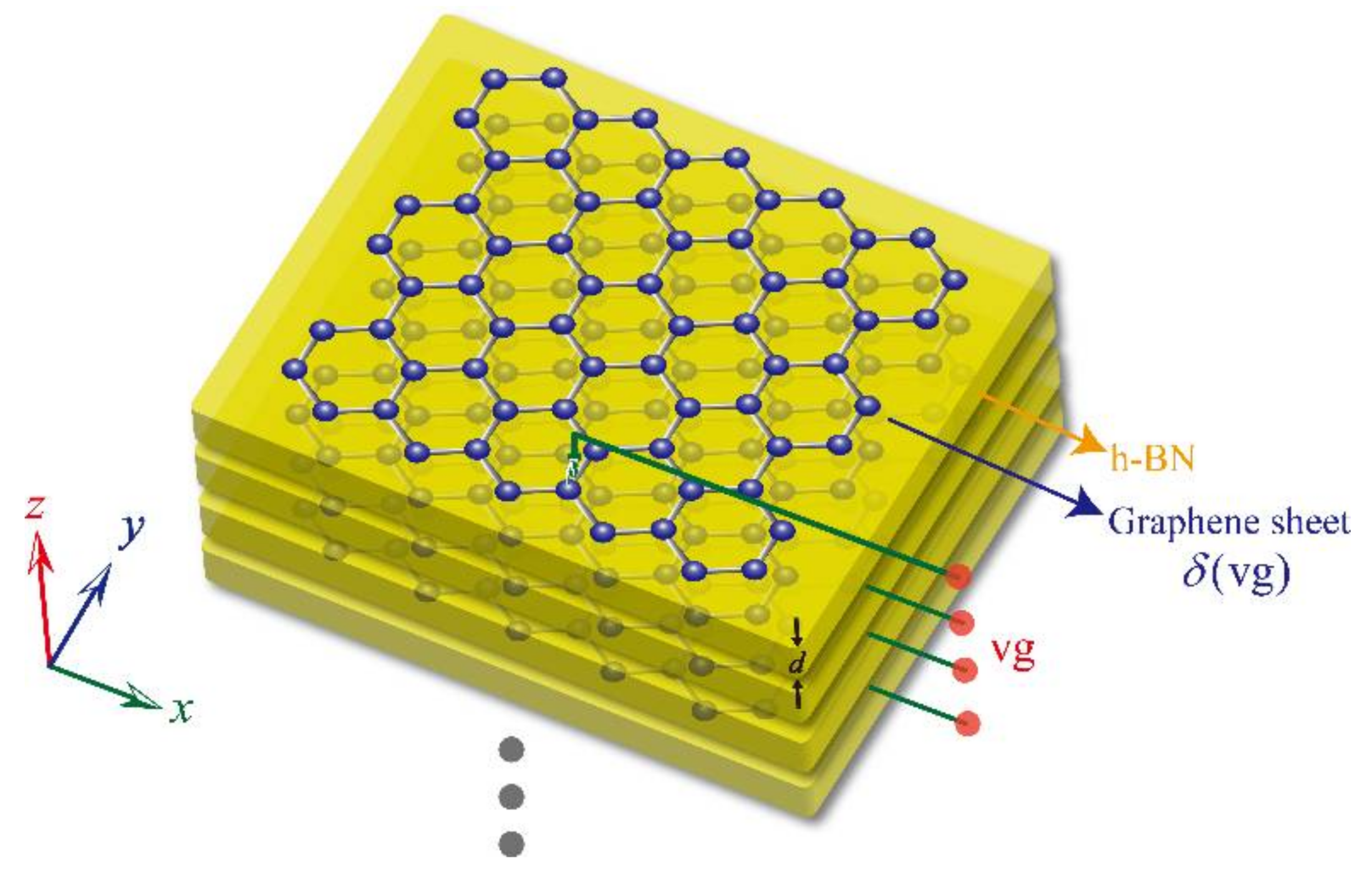
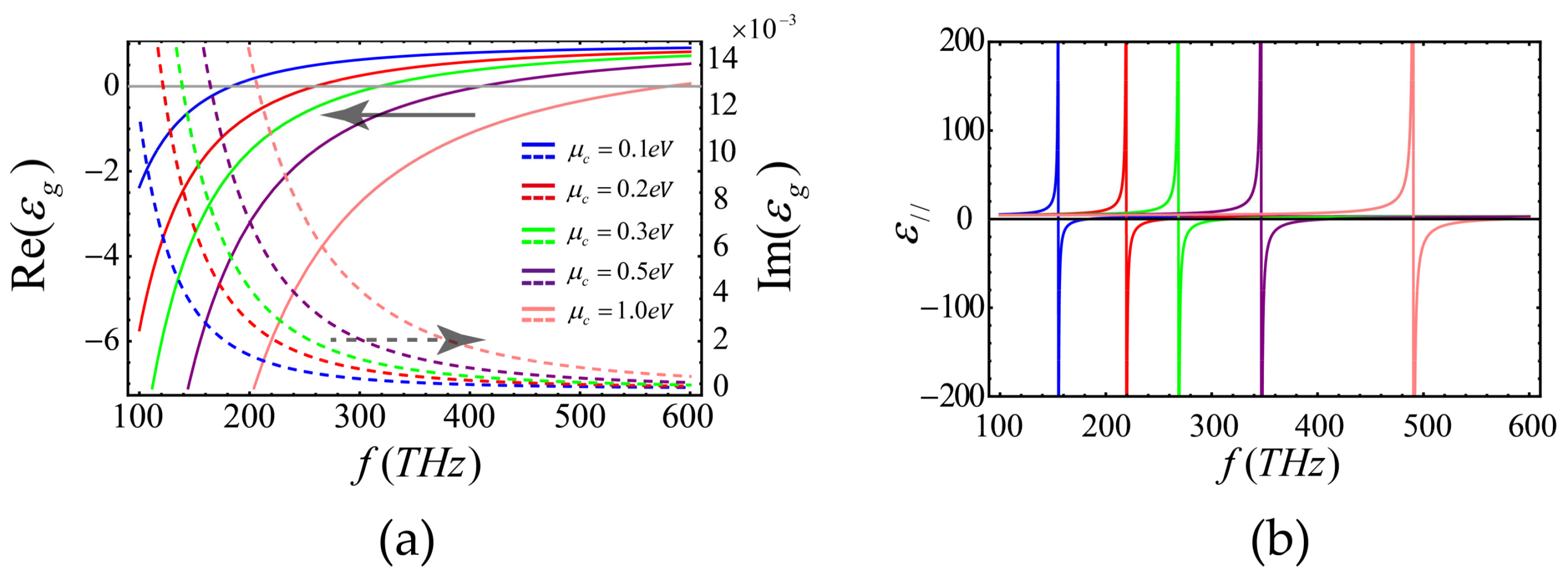
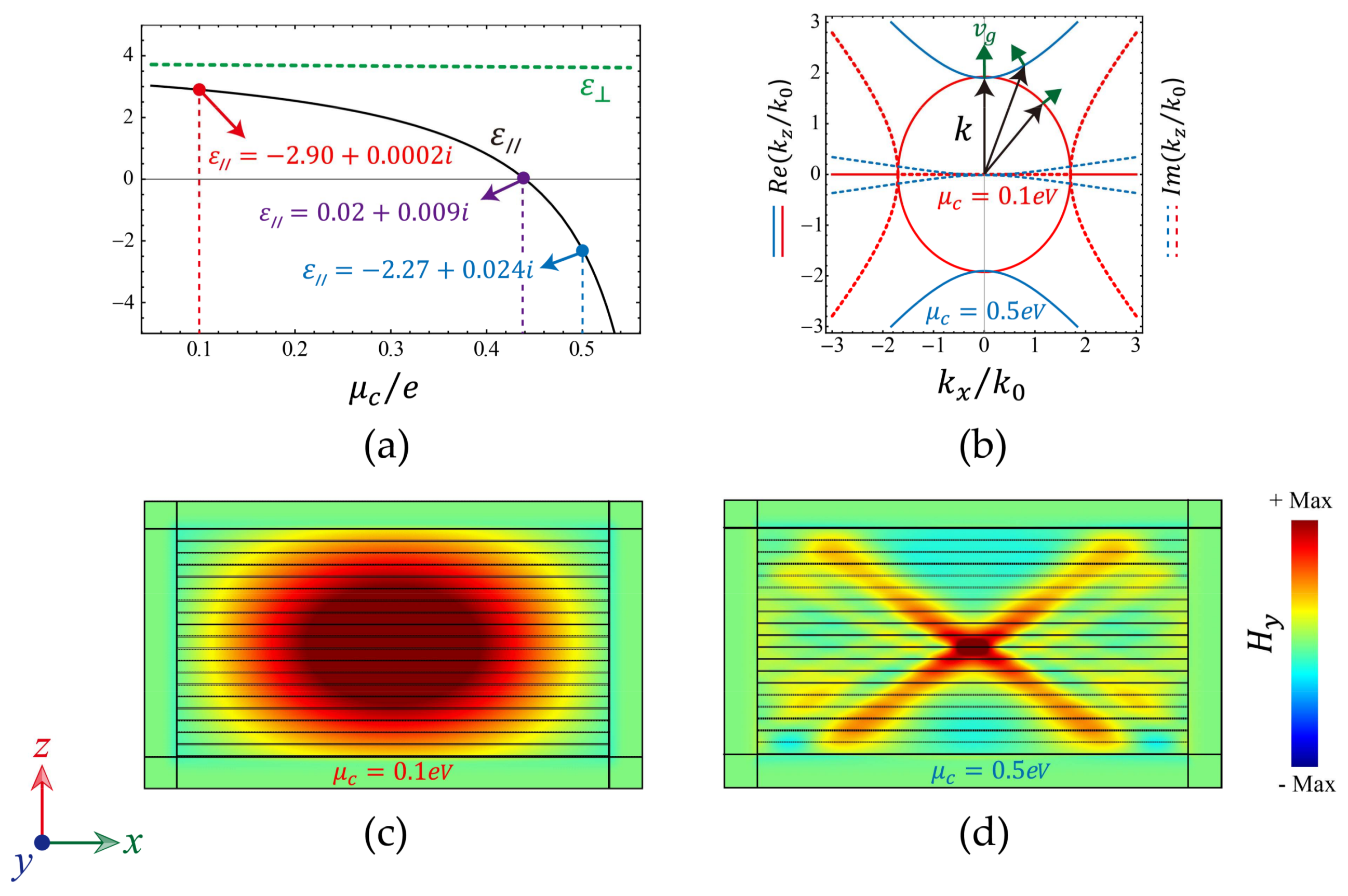
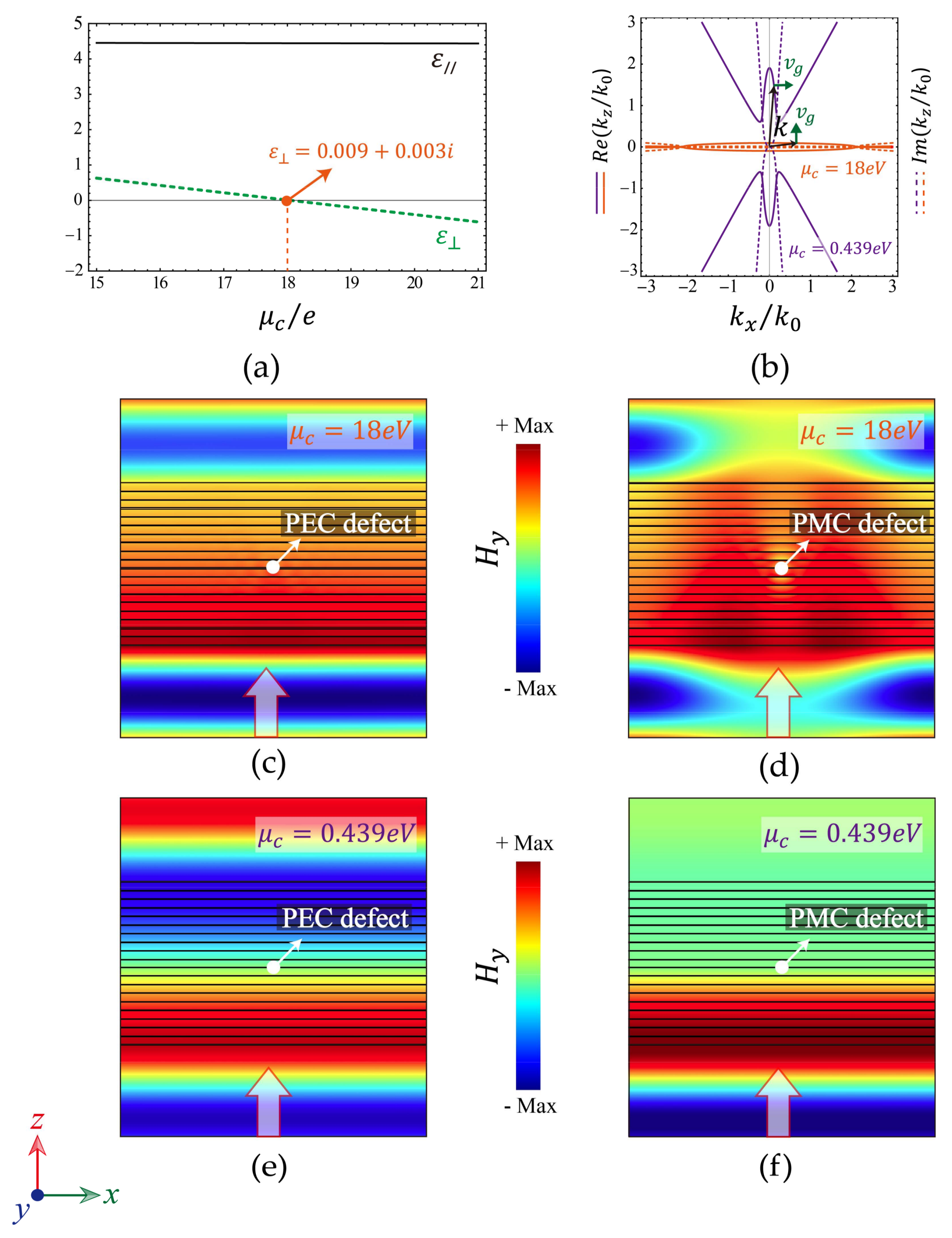
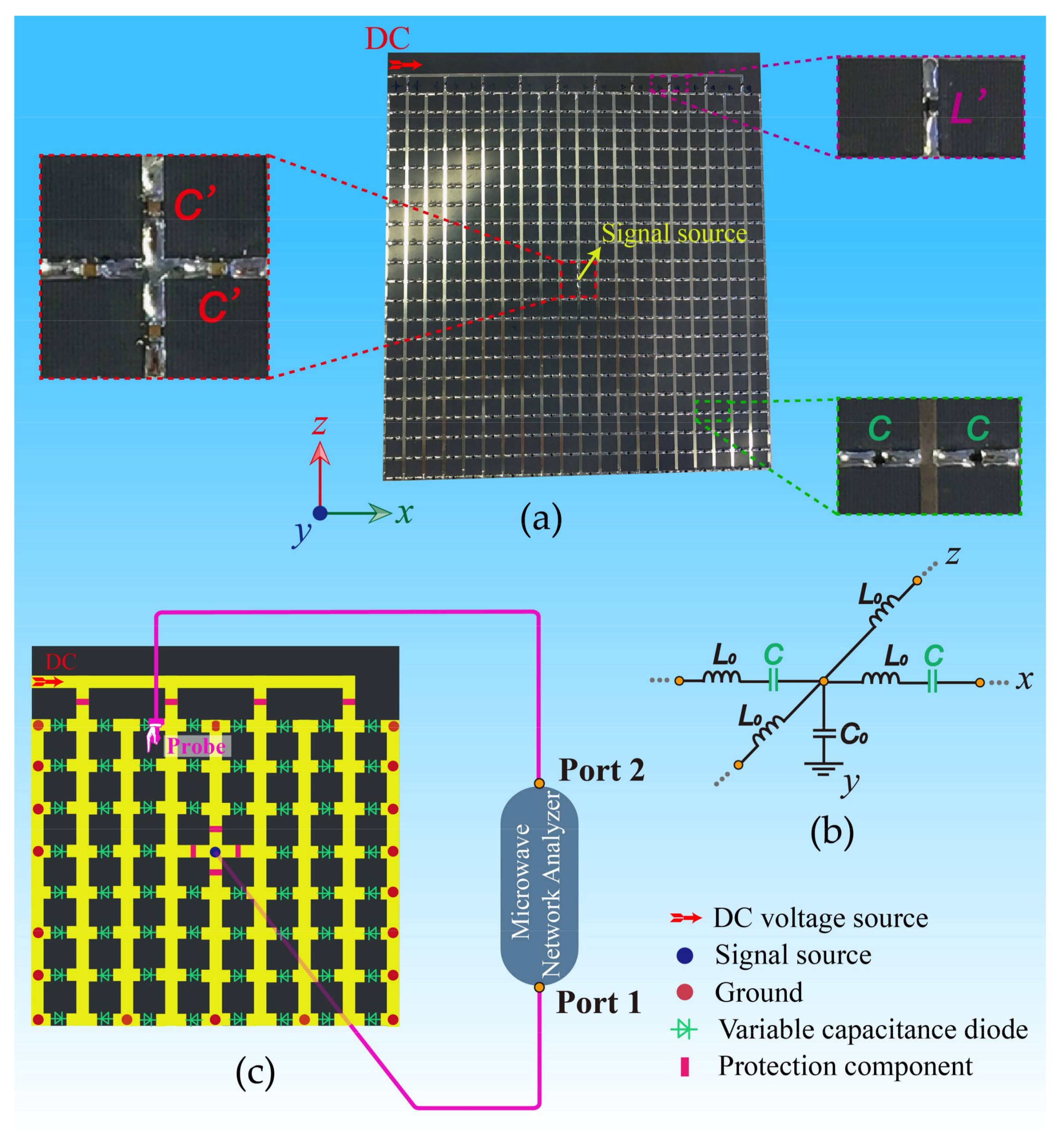
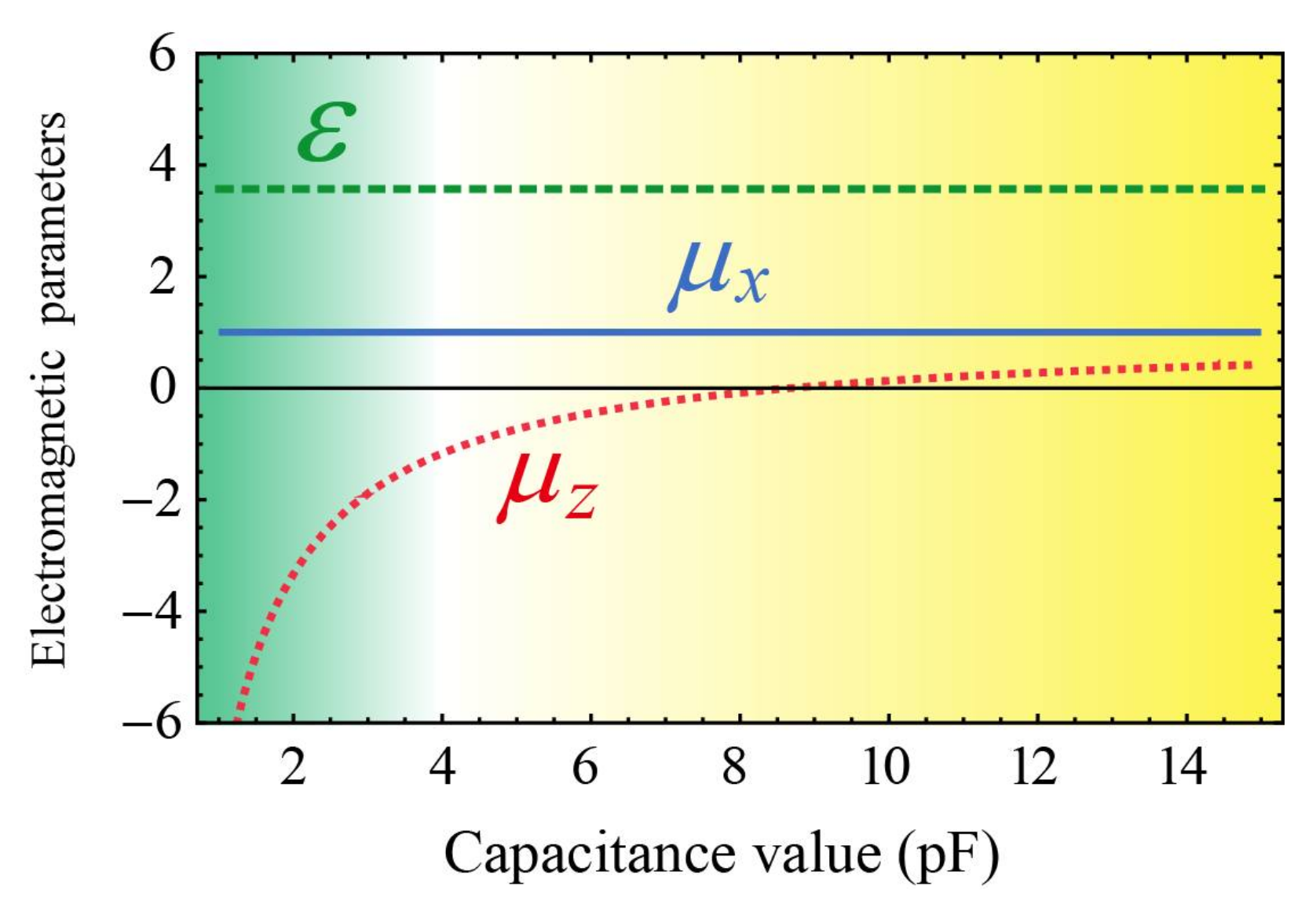
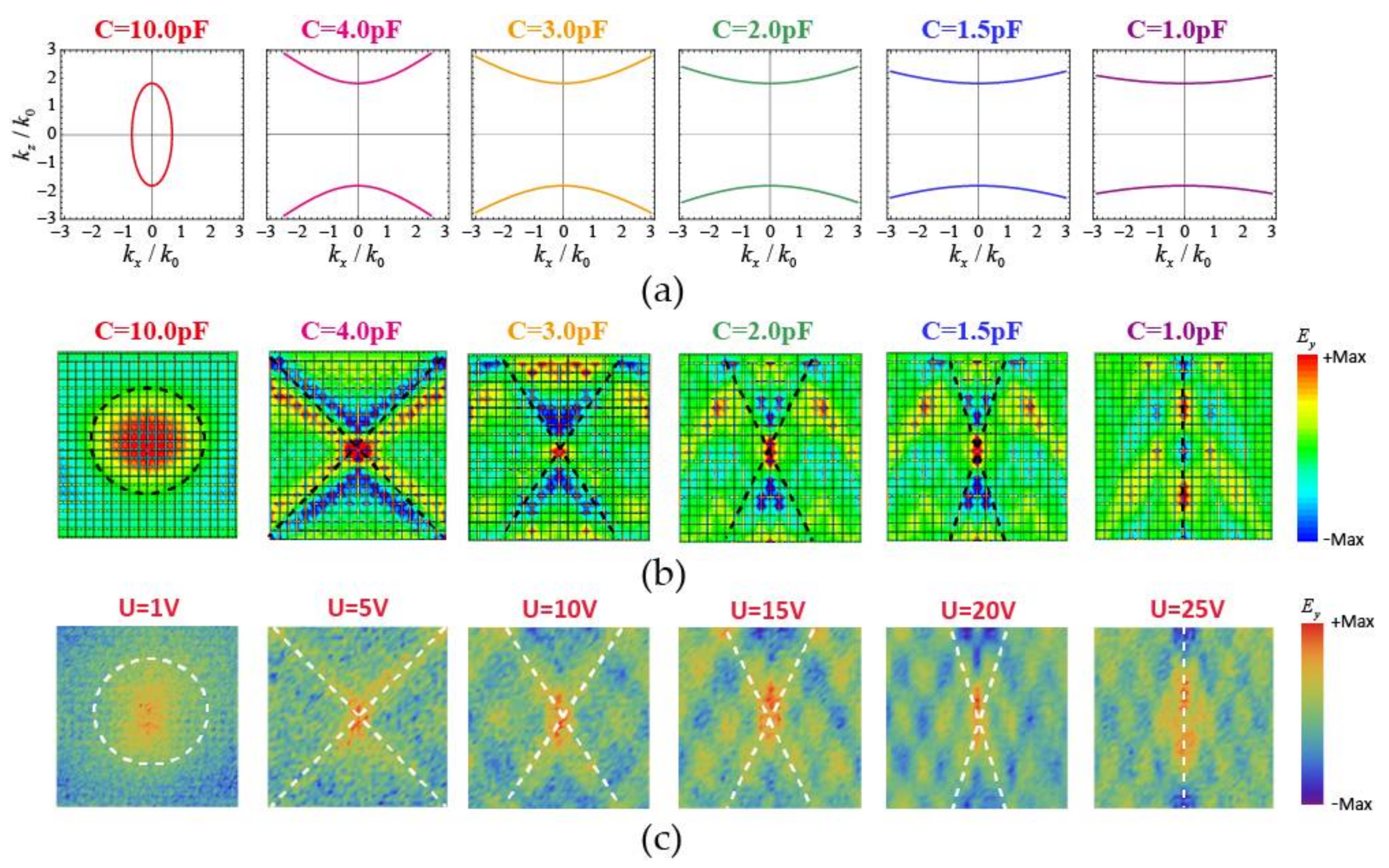
© 2018 by the authors. Licensee MDPI, Basel, Switzerland. This article is an open access article distributed under the terms and conditions of the Creative Commons Attribution (CC BY) license (http://creativecommons.org/licenses/by/4.0/).
Share and Cite
Guo, Z.; Jiang, H.; Sun, Y.; Li, Y.; Chen, H. Actively Controlling the Topological Transition of Dispersion Based on Electrically Controllable Metamaterials. Appl. Sci. 2018, 8, 596. https://doi.org/10.3390/app8040596
Guo Z, Jiang H, Sun Y, Li Y, Chen H. Actively Controlling the Topological Transition of Dispersion Based on Electrically Controllable Metamaterials. Applied Sciences. 2018; 8(4):596. https://doi.org/10.3390/app8040596
Chicago/Turabian StyleGuo, Zhiwei, Haitao Jiang, Yong Sun, Yunhui Li, and Hong Chen. 2018. "Actively Controlling the Topological Transition of Dispersion Based on Electrically Controllable Metamaterials" Applied Sciences 8, no. 4: 596. https://doi.org/10.3390/app8040596
APA StyleGuo, Z., Jiang, H., Sun, Y., Li, Y., & Chen, H. (2018). Actively Controlling the Topological Transition of Dispersion Based on Electrically Controllable Metamaterials. Applied Sciences, 8(4), 596. https://doi.org/10.3390/app8040596






